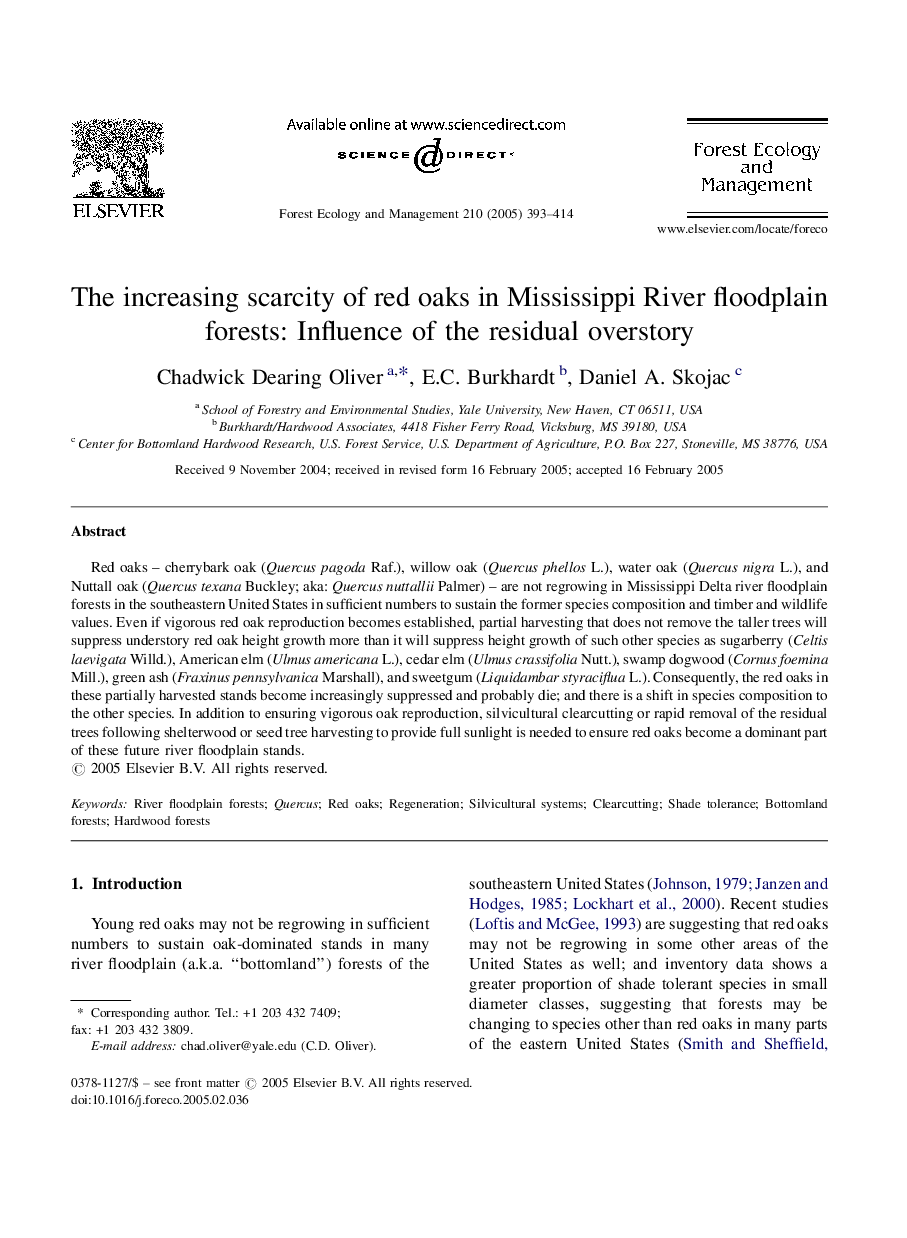| Article ID | Journal | Published Year | Pages | File Type |
|---|---|---|---|---|
| 9620378 | Forest Ecology and Management | 2005 | 22 Pages |
Abstract
Red oaks - cherrybark oak (Quercus pagoda Raf.), willow oak (Quercus phellos L.), water oak (Quercus nigra L.), and Nuttall oak (Quercus texana Buckley; aka: Quercus nuttallii Palmer) - are not regrowing in Mississippi Delta river floodplain forests in the southeastern United States in sufficient numbers to sustain the former species composition and timber and wildlife values. Even if vigorous red oak reproduction becomes established, partial harvesting that does not remove the taller trees will suppress understory red oak height growth more than it will suppress height growth of such other species as sugarberry (Celtis laevigata Willd.), American elm (Ulmus americana L.), cedar elm (Ulmus crassifolia Nutt.), swamp dogwood (Cornus foemina Mill.), green ash (Fraxinus pennsylvanica Marshall), and sweetgum (Liquidambar styraciflua L.). Consequently, the red oaks in these partially harvested stands become increasingly suppressed and probably die; and there is a shift in species composition to the other species. In addition to ensuring vigorous oak reproduction, silvicultural clearcutting or rapid removal of the residual trees following shelterwood or seed tree harvesting to provide full sunlight is needed to ensure red oaks become a dominant part of these future river floodplain stands.
Related Topics
Life Sciences
Agricultural and Biological Sciences
Ecology, Evolution, Behavior and Systematics
Authors
Chadwick Dearing Oliver, E.C. Burkhardt, Daniel A. Skojac,
